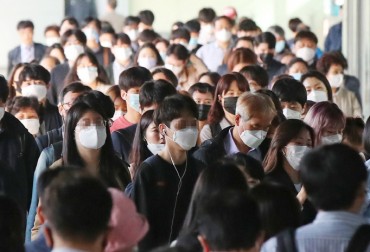
The top court has ruled that drivers for the ride-hailing service Tada should be considered employees under labor law, potentially reshaping the gig economy landscape in the country. (Yonhap)
SEOUL, July 25 (Korea Bizwire) – In a landmark decision, South Korea’s Supreme Court has ruled that drivers for the ride-hailing service Tada should be considered employees under labor law, potentially reshaping the gig economy landscape in the country.
The court’s ruling, announced on July 25, applied traditional employment criteria to determine the status of workers in online platform businesses. This decision is expected to have far-reaching implications for similar cases involving platform workers.
The case centered on a lawsuit filed by Socar, the parent company of VCNC, which operated Tada. Socar sought to overturn a previous ruling by the National Labor Relations Commission that had deemed the termination of a driver’s contract as unfair dismissal.
The dispute began in July 2019 when VCNC, citing the need to reduce its fleet, terminated contracts with about 70 drivers, including the plaintiff identified as “A.” The driver argued that he was effectively working under VCNC’s direction and supervision, making him an employee rather than a contractor.
While the lower court initially sided with Socar, the appellate court ruled in favor of the driver. The Supreme Court upheld this decision, stating that the existing legal framework for determining employee status should be applied to online platform labor relationships.
The court emphasized the concept of “subordination” as a key factor in determining employee status. It found that the cooperative company contracted by “A” lacked independence in managing driving operations, and that Socar effectively determined wages, work content, and exercised supervision over the freelance drivers.
Additionally, the court noted that Socar managed work rules and attendance, and provided compensation proportional to working hours. These factors contributed to the conclusion that the drivers were indeed employees of Socar.
The Supreme Court also addressed a procedural issue raised by Socar regarding the timing of the driver’s complaint. Initially, “A” filed against VCNC and later added Socar as a respondent. The court rejected Socar’s argument that this addition exceeded the statute of limitations for filing unfair dismissal claims.
“Given the increasingly diverse forms of modern employment, it is often difficult for workers to accurately identify their employer from the outset,” the court stated. It ruled that adding or changing respondents is permissible within the scope of contesting the original dismissal decision.
M. H. Lee (mhlee@koreabizwire.com)






